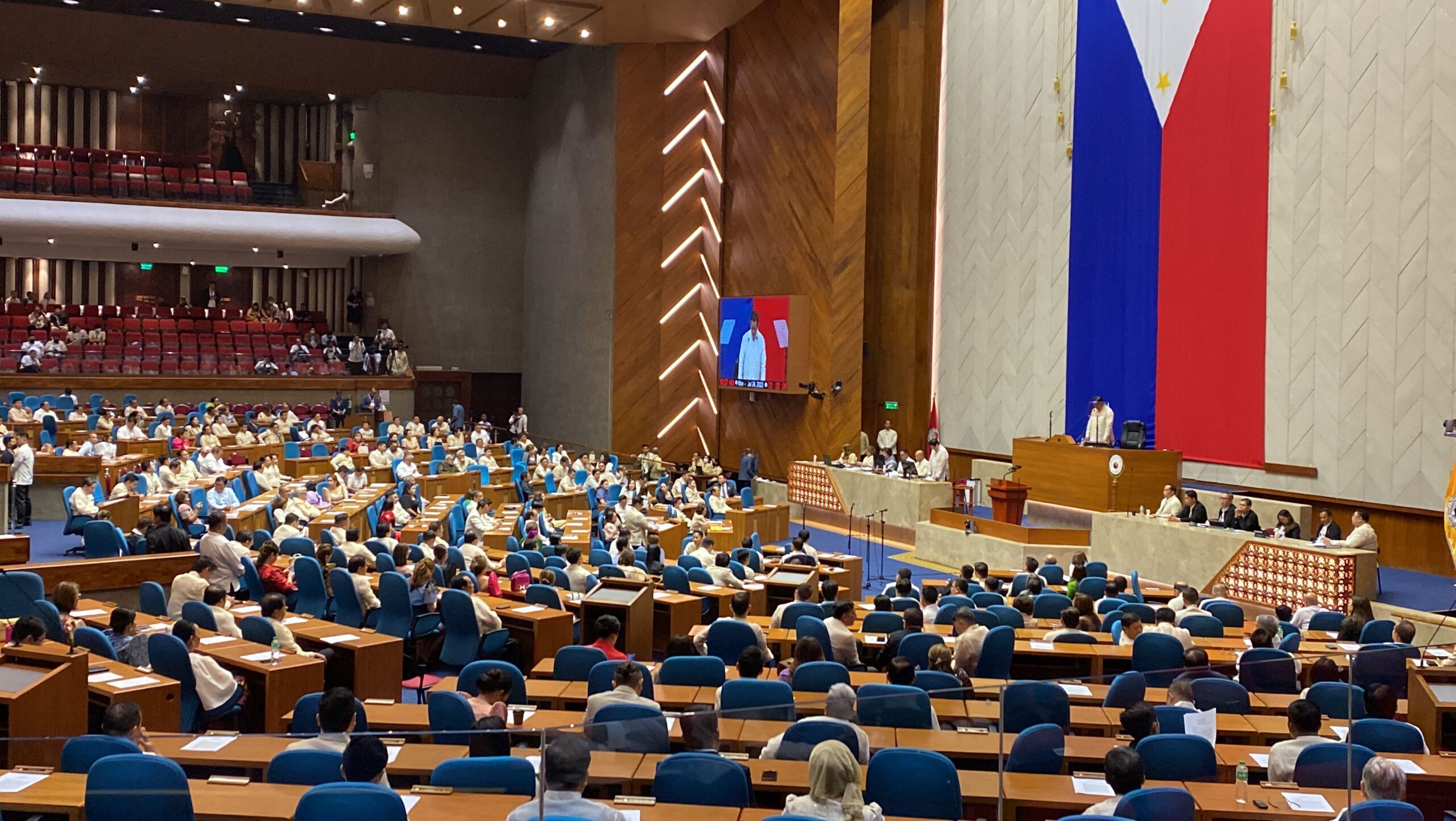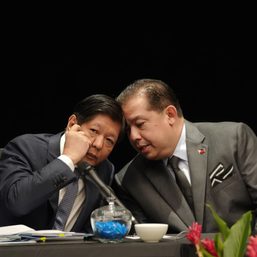SUMMARY
This is AI generated summarization, which may have errors. For context, always refer to the full article.

MANILA, Philippines – Former chief justice Reynato Puno reminded the House of Representatives that amending the Constitution by treating proposals as regular bills may pose challenges as it is not an official mode for charter change.
Congressmen call the legislative route for charter change the “Bernas proposal,” after lawyer and priest Joaquin Bernas, one of the framers of the 1987 Constitution, who expressed this personal interpretation after the Constitution was already approved in a plebiscite.
Congressmen last week said they would be following the formula so the lower chamber wouldn’t have to wait for the Senate to finish its own deliberations. It’s a move to expedite the process, as House lawmakers want to finish discussions before the Holy Week break.
“We follow the Bernas proposal on having legislation to amend the Constitution because the Senate does not even want to meet with us,” said Cagayan de Oro 2nd District Representative Rufus Rodriguez, who also chairs the House constitutional amendments committee, on Monday, February 26.
Puno, however, told the committee during the Monday hearing that “personal views do not carry much weight, precisely because they are personal views and do not reflect the consensus arrived at by the framers of the Constitution,” referring to Bernas’ interpretation.
Voting as one or separately?
Congressmen recently filed a charter change resolution that is almost an exact copy of what was filed at the Senate. The lower chamber’s version does not explicitly state that the houses of Congress will be voting separately – another point of contention between the two chambers:

One of the modes of amending or revising the 1987 Constitution is to convene Congress into a constituent assembly. However, Puno explained, the authors of the Constitution were operating on the assumption that there would be a unicameral Congress.
When the final draft provided for two chambers, “in the rush of things, they forgot to adjust their recommendation on how to amend the Constitution in the case where Congress is bicameral and meeting as a constitutional assembly,” the former chief justice said.
Puno pointed out that the two houses of Congress can follow the “traditional way” of meeting stated in the 1935 Constitution. This means that while senators and congressmen can hold a session together, they would vote on matters separately.
The former chief justice told lawmakers that if they are trying to interpret the Constitution, they must understand “the intent of the framers.”
“[We may violate this] if we disregard the reality that Article 17, Section 1.1 of the Constitution is there by inadvertence, is there by accident, is there as a clear error for it is intended for a unicameral and not for a bicameral Congress,” Puno said.
2 ways to fix the voting issue
1-RIDER Partylist Representative Ramon Rodrigo Gutierrez on Tuesday, February 27, said congressmen would rather risk it than completely drop efforts to amend the Constitution.
“This is the job, why we invite resource persons…we are being informed of the possible pitfalls of our endeavors…. Although we may be challenged constitutionally, [it] doesn’t mean we shouldn’t push forward,” Gutierrez said in a press conference.
“There is no other way to do constitutional change but to go through a constitutional challenge.”
Puno pointed out two ways to fix the issue on voting.
One path is to bring the case to the Supreme Court. In doing so, the former chief justice said, proponents should prove how it is not going to be susceptible to “grave abuse of power.”
“If all these requirements can be complied with, I am confident that the Supreme Court will settle the issue in the exercise of its power to interpret the Constitution,” Puno said.
The political path, he said, is to let the public vote and choose through a referendum if senators and congressmen should vote together.
In this case, the Supreme Court would not have the jurisdiction to review the result of the referendum.
While they did not pursue a referendum, proponents of the fresh push for charter change had a people’s initiative rolling in January to have lawmakers from both houses of Congress vote jointly on proposed amendments.
The Senate rejected the movement as it “eliminates the Senate from the equation,” noting that the members of the House would easily outnumber the votes of the senators. – Rappler.com
1 comment
How does this make you feel?





![[Just Saying] SONA, Congress, accountability, and free speech](https://www.rappler.com/tachyon/2024/07/TL-SONA-congress-accountability-free-speech.jpg?resize=257%2C257&crop=330px%2C0px%2C1080px%2C1080px)
![[Just Saying] Reciting a hymn and pledge: Illegal, punitive, unconstitutional](https://www.rappler.com/tachyon/2024/06/20240612-reciting-hymn-pledge-unconstitutional.jpg?resize=257%2C257&crop=338px%2C0px%2C720px%2C720px)
![[Just Saying] Demonizing divorce and the mockery of our Constitution](https://www.rappler.com/tachyon/2024/06/TL-Demonizing-divorce-mocking-constitution-June-6-2024.jpg?resize=257%2C257&crop=265px%2C0px%2C720px%2C720px)
![[ANALYSIS] A Rube Goldberg cartoon of our inconvenient reality](https://www.rappler.com/tachyon/2024/05/tl-inconvenient-reality-05092024.jpg?resize=257%2C257&crop=280px%2C0px%2C720px%2C720px)
![[Vantage Point] Philippine economic reforms run into headwinds](https://www.rappler.com/tachyon/2024/05/ph-economic-headwind-may-2024.jpg?resize=257%2C257&crop_strategy=attention)



![[WATCH] Bamban POGO scandal: There’s a bigger fish than Alice Guo](https://www.rappler.com/tachyon/2024/07/inside-track-tcard-bamban-pogo.jpg?resize=257%2C257&crop=435px%2C0px%2C1080px%2C1080px)
I am sorry for former Chief Justice Reynato Puno about his reminder to our lawmakers: “… if they are trying to interpret the Constitution, they must understand ‘the intent of the framers.’” It is because our lawmakers, especially that of the HOR, are already interpreting our Constitution according to their intent (or rather, preferred intent). And about the path? They prefer the “political path” in a kind that favors them. Former Chief Justice Puno deserves my sincere appreciation for such a reminder, even if the HOR will not follow it.